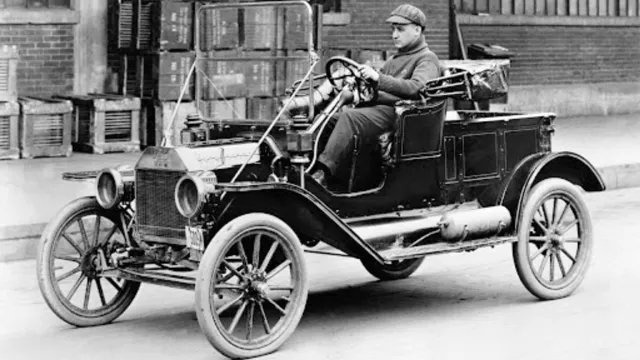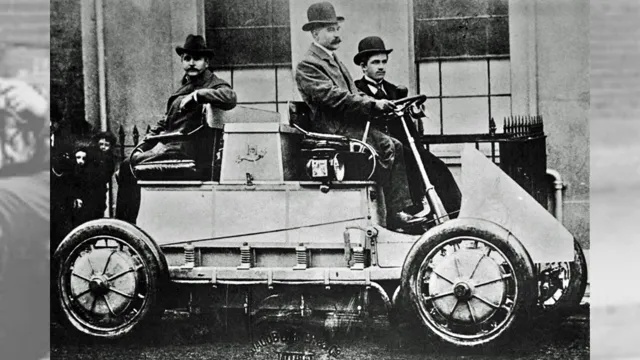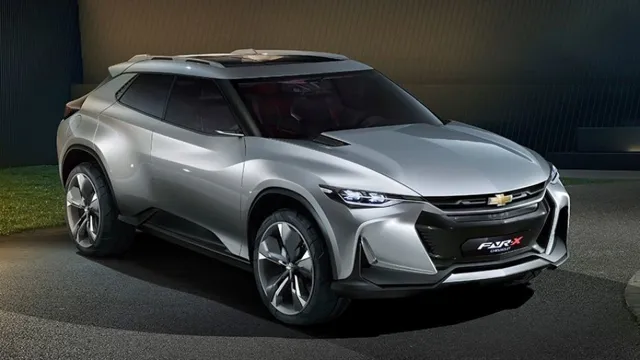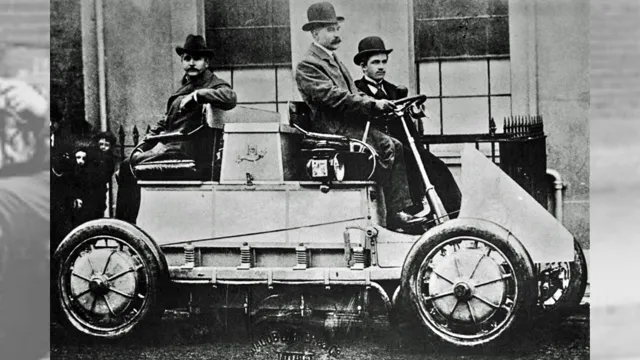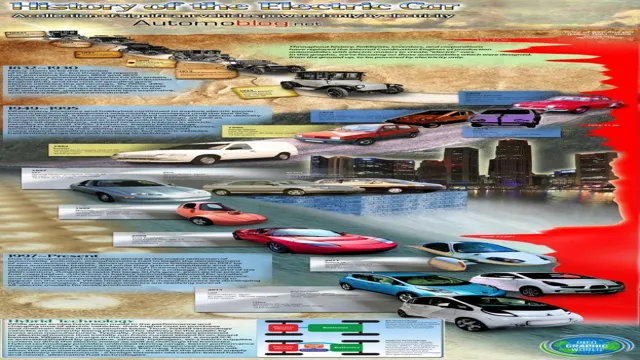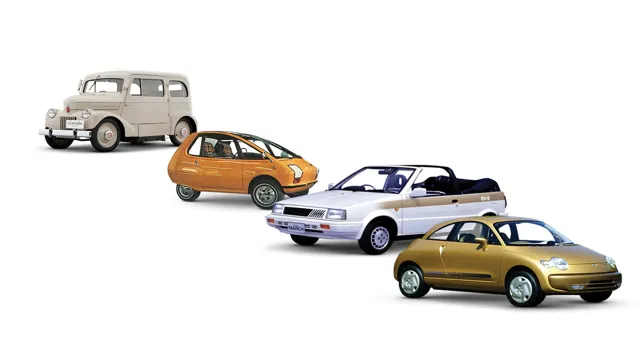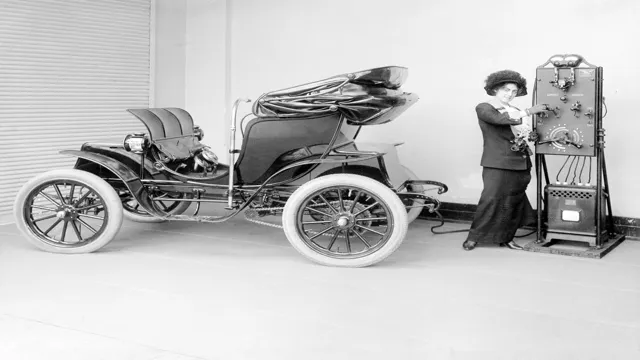The Electric Drive that Reshaped Transportation: A Comprehensive Guide on the History of Electric Cars in Wikipedia
Electric cars have become increasingly popular in recent years, as people seek out more eco-friendly alternatives to traditional gas-powered vehicles. However, the history of electric cars goes back much further than many people realize. In fact, the first electric vehicle was developed in the 1830s, before the invention of the gasoline-powered engine.
Over the next century, electric cars saw periods of popularity and decline, with famous names like Thomas Edison and Henry Ford getting involved in their development. But it wasn’t until the 1990s and early 2000s that electric cars began to see a resurgence in interest, with new advancements in battery technology making them more practical than ever before. Today, electric cars are one of the fastest-growing segments of the automotive industry, with major manufacturers like Tesla, Nissan, and General Motors all offering their own models.
From the first electric carriages to the sleek and stylish options available today, the history of electric cars is a fascinating journey that has helped shape the world we live in today.
Early Innovations
Electric cars have been around for over a century, with their earliest innovations dating all the way back to the late 1800s. The first ever electric car was created in 1832 by Scottish inventor Robert Anderson, but it wasn’t until the late 19th century that electric cars began to see more widespread use. In fact, by the turn of the 20th century, electric cars represented approximately one third of all cars on the road in the United States.
Despite their popularity, however, the early electric cars had a limited range and took a long time to recharge. This contributed to the eventual decline in their popularity, as gasoline-powered cars became more efficient and more widely available. Nevertheless, the early innovations in electric car technology paved the way for future developments, and continues to inspire the modern electric cars we know today.
If you’re curious to learn more about electric car history, Wikipedia is an excellent resource to check out.
Nineteenth-century experiments with battery-powered cars
Nineteenth-century experiments with battery-powered cars were a fascinating time in the history of transportation. During this period, inventors were experimenting with batteries and electric motors to power vehicles, which was a radical idea at the time. One of the earliest innovators was Thomas Davenport, who patented an electric motor in 183
Another notable figure was Robert Anderson, who invented the first electric carriage in Scotland in 183 Although the battery technology of the time was limiting, the experiments of these early pioneers laid the foundation for today’s modern electric cars. It’s incredible to think that these inventors were able to envision a world where cars could run on electricity more than a century before the concept became mainstream.
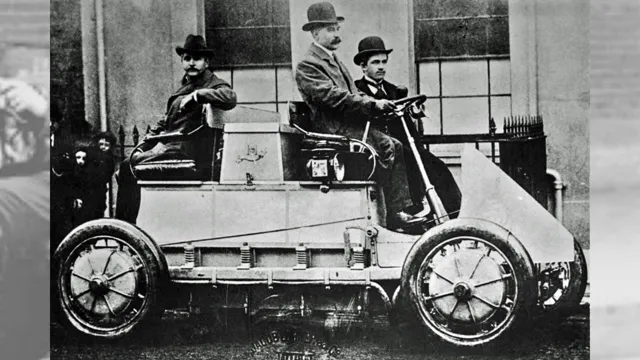
Development of the first practical electric car in the early 1900s
The development of the first practical electric car in the early 1900s was a huge milestone in the history of automobiles. Innovators at the time were looking for ways to create more sustainable modes of transportation that did not rely on fossil fuels. Many early adopters of electric cars were women, who appreciated the convenience of not having to hand crank their vehicles each time they needed to start them.
One of the most innovative features of the early electric cars was regenerative braking, which allowed the car to capture energy during braking and use it to recharge the battery. Although these early models had limited range and were not as powerful as gasoline cars, their potential to be environmentally friendly made them an attractive alternative for those looking to reduce their carbon footprint. While early electric cars may have gone by the wayside for several decades, modern advancements have brought them back into the spotlight as a viable alternative to traditional gasoline cars.
Decline and Resurgence
Electric cars have had a tumultuous history over the past century. During the early 1900s, electric cars were quite popular, with many automakers producing battery-driven cars. However, as gasoline-powered cars became more affordable and reliable, electric cars went into a decline in the 1920s.
After that, the electric car remained somewhat dormant until the late 1990s when a resurgence of interest began. Today, electric cars are becoming more popular than ever, with many major automakers producing their own models. The Wikipedia page on electric car history provides a detailed overview of this complex and fascinating evolution.
It is amazing to see how electric cars have gone from being a niche curiosity to a serious rival to traditional gas-powered cars. With their improved battery technology and extended driving ranges, electric cars are poised to become even more popular in the coming years.
Factors that led to the decline of electric cars in the mid-20th century
The decline of electric cars in the mid-20th century was influenced by multiple factors that included technological limitations, infrastructure challenges, and a lack of government support. At the time, gasoline-powered cars were becoming more affordable and accessible to the masses, while electric cars were still expensive and limited in range. Additionally, charging stations were not widely available, making long-distance travel impractical.
Governments also favored the development of roads rather than charging infrastructure. Consequently, electric cars gradually lost their market share to gasoline-powered vehicles, and by the 1930s, they were virtually extinct. However, a resurgence of electric cars has been witnessed in recent years, thanks to technological advancements, more extensive charging networks, and government incentives.
The once-maligned electric cars are becoming more popular, particularly due to their eco-friendliness and efficiency. As electric cars become more accessible and cheaper, the future looks bright for the electric vehicle industry.
Renewed interest and advances in electric car technology in the 21st century
The decline of electric cars in the early 20th century was widely attributed to the emergence of gasoline-powered vehicles that were more convenient and cheaper to produce. However, the 21st century has seen a renewed interest in electric vehicles due to advances in technology, increasing environmental concerns, and government incentives. The latest electric cars are now equipped with advanced batteries that can provide a longer range, more efficient charging systems, and better performance.
Electric vehicles are expected to become more affordable with mass production and advancements in manufacturing techniques. Businesses, governments, and private consumers now see electric cars as a viable option compared to traditional gas-powered cars. This resurgence of electric car technology is seen not only as a solution to climate change but also a sign of technological advancements in the energy sector.
With the increased attention and investment, it is clear that electric cars are here to stay, and the future looks bright for the electric car industry.
Introduction of the Tesla Roadster and its impact on the industry
The Tesla Roadster was groundbreaking when it was first introduced as an electric sports car in 200 It was the first electric vehicle to demonstrate that EVs could be both practical and high-performance. The Roadster was also a sign of Tesla’s early ambitions to shake up the automotive industry and establish itself as a major player in the segment.
However, despite its initial success, Tesla experienced a decline in the years following the Roadster’s launch. It was only after the company’s major investment in the Model S that Tesla’s fortunes began to turn around. The Roadster’s impact on the industry was undeniable.
It proved that electric cars could compete with gasoline-powered vehicles, changing the minds of skeptics who felt that EVs were simply not practical for everyday use. Its success paved the way for a new generation of electric cars, including those produced by Tesla itself. The Roadster might have had a rocky start, but it set the stage for a new era in automotive technology and sustainability.
Current and Future Trends
Electric car history has an interesting past, with early prototypes of electric cars dating back to the 1830s. However, it wasn’t until the late 1990s that electric cars began to gain more widespread attention and commercial viability. The introduction of popular models such as the Toyota Prius and Tesla Roadster helped to propel electric cars into the mainstream.
Today, electric cars are becoming more commonplace as consumers become more environmentally conscious and dependent on technology. The future of electric cars looks promising, with advancements in battery technology and charging infrastructure making it easier than ever to make the switch from gas-powered vehicles. In fact, according to Wikipedia, electric car sales are expected to reach 54% of new car sales by 2040.
The surge in popularity of electric cars has even led to the creation of specialized EV charging stations and the implementation of EV-friendly policies by governments, signaling a growing shift towards sustainability and clean energy.
Global market trends in electric car sales and production
Global market trends in electric car sales and production The demand for electric cars has been steadily increasing in recent years due to the growing awareness of the environmental impact of fossil fuels. As a result, electric car sales have been rapidly growing globally, with China and Europe leading the way. In 2020 alone, China sold over
3 million electric vehicles, making up 41% of global sales, followed by Europe with over 2 million sales (31%). This trend is expected to continue in the coming years, with forecasts indicating that by 2025, half of new car sales will be electric vehicles.
Governments worldwide are also committing to net-zero emissions, with the EU and UK committing to transition to electric vehicles by 2035 and 2030, respectively. As a result, car manufacturers are increasing their production of electric vehicles, with plans to phase out internal combustion engines completely in the coming years. However, challenges such as battery production and charging infrastructure are still being addressed to fully realize the potential of electric vehicles globally.
Advancements in electric car batteries and charging technology
Electric car batteries and charging technology Electric cars are becoming increasingly popular, with advancements in battery technology and charging infrastructure making them more accessible and convenient for everyday use. The latest batteries are smaller, lighter, and more efficient, providing longer range and faster charging times than ever before. Additionally, charging stations are becoming more widespread, with many countries investing in public charging infrastructure to encourage adoption of electric vehicles.
In the future, industry experts predict that we may see even more efficient and affordable battery technology, with faster charging times, longer ranges, and reduced environmental impact. This is really exciting news for anyone considering making the switch to an electric vehicle, as it means that the technology is rapidly evolving to better meet our needs. Whether you’re looking to reduce your carbon footprint or simply want a more efficient and enjoyable driving experience, electric cars are definitely worth considering.
Conclusion
In conclusion, the electric car is not just a passing fad or a futuristic concept, but a vehicle with a rich and storied history. From the early days of the 19th century to the present day, electric cars have played a vital role in the evolution of transportation technology, paving the way for a greener, more sustainable future. Despite setbacks and challenges, the electric car has persevered, and with the rapid growth of renewable energy sources and advances in battery technology, its potential for widespread adoption has arguably never been greater.
So, whether you’re a die-hard fan of the Tesla Roadster or a casual admirer of the Nissan Leaf, one thing is certain: the electric car is here to stay, and it’s only getting better with time.”
FAQs
What is the history of electric cars according to Wikipedia?
According to Wikipedia, the history of electric cars dates back to the late 19th century when they were first introduced as a viable alternative to gasoline-powered vehicles.
What are the advantages of electric cars according to Wikipedia?
According to Wikipedia, electric cars have several advantages over gasoline-powered vehicles, including lower emissions, lower operating costs, and a smoother, quieter ride.
What are the different types of electric cars according to Wikipedia?
According to Wikipedia, there are several different types of electric cars, including battery electric vehicles (BEVs), plug-in hybrid electric vehicles (PHEVs), and hybrid electric vehicles (HEVs).
What is the future of electric cars according to Wikipedia?
According to Wikipedia, the future of electric cars looks bright, with many countries and companies around the world investing heavily in the development of electric vehicles and charging infrastructure.

